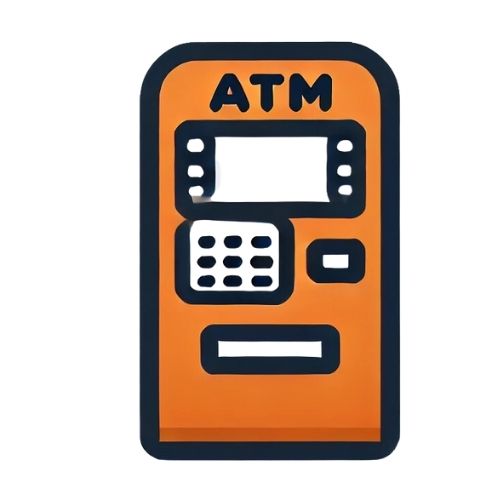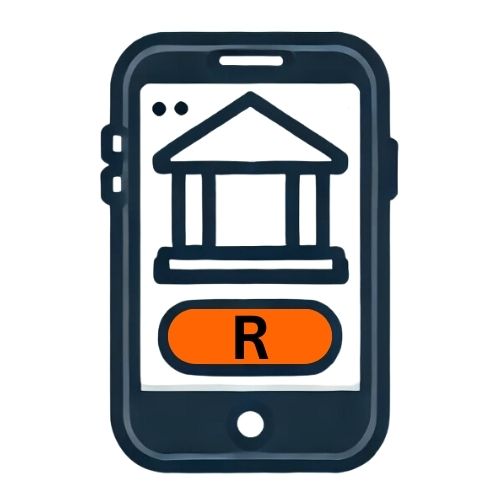
A cheque account with no monthly fees can help South Africans cut unnecessary banking costs. These accounts are designed for people who want basic banking without paying for extras they don’t use. While some fees may still apply for certain services, no-fee accounts usually offer free debit cards, mobile banking, and ATM withdrawals within the bank’s network. They are a practical choice for students, low-income earners, or anyone looking to manage money more efficiently.
Key Takeaways
- No monthly fee doesn’t mean no costs: While many cheque accounts have no monthly maintenance fee, fees for ATM withdrawals, debit orders, and branch services may still apply.
- Ideal for budget-conscious users: No-fee accounts are best suited for students, pensioners, freelancers, and anyone who transacts infrequently or prefers digital banking.
- Compare structures and features carefully: South African banks offer bundled or pay-as-you-transact options, so it’s worth reviewing the full fee structure, accessibility, and benefits before opening an account.
About Arcadia Finance
Apply for a loan with ease through Arcadia Finance. There are no application fees, and you can choose from 19 trusted lenders registered with the National Credit Regulator. Enjoy a fast, secure process designed around your financial needs.
What Is a Cheque Account?
A cheque account, also known as a current account, is a type of bank account used mainly for routine transactions such as withdrawing cash, receiving payments, and making everyday purchases with a debit card. These accounts are offered by both traditional banks and online banking platforms in South Africa. They are suitable for individuals who need regular access to their money for personal or household expenses.

How Cheque Accounts Work
Cheque accounts are made for frequent, day-to-day use. You can deposit funds into the account either through an ATM, in-branch deposit, or by having your salary paid directly into it. You can access your money by withdrawing cash at ATMs or by using your debit card to pay for goods and services. Most cheque accounts also allow you to make electronic payments, such as paying bills online or sending money through EFTs or banking apps. These features make cheque accounts a convenient option for managing personal finances.
Some cheque accounts come with an overdraft facility, which is a service designed to stop payments from being declined when there is not enough money in the account. This service usually works by allowing your cheque account to go into a debit balance when needed.
Although cheque accounts usually do not provide high interest, a few banks do offer interest-earning options. These accounts pay a small return on your account balance, but the rate is generally lower than what you would get from a savings account or other types of investments.
Security measures are often built into cheque accounts to help guard against unauthorised access or fraudulent activity. Most banks include fraud detection tools and monitoring, and many also offer zero-liability protection to ensure account holders are not held responsible for unauthorised transactions.
Opening a fee-free checking account starts with choosing the right institution. If you’re new to banking or switching banks, here’s a quick guide to help you open a bank account smoothly and confidently. It covers all the basics, from required documents to how to compare offers.
Common Bank Fees Charged on Cheque Accounts
When managing a cheque account in South Africa, it’s essential to be aware of the various fees that banks may charge. Understanding these fees can help you make informed decisions and avoid unexpected costs.
| Bank | Monthly Maintenance Fee | ATM Withdrawal Fee (Own ATM) | ATM Withdrawal Fee (Other ATM) | Debit Order Charges | Branch Withdrawal Fee | SMS Notification Fee |
|---|---|---|---|---|---|---|
| Capitec | R7.50 | R10 per R1 000 | R10 per R1 000 | R3 | Not specified | R0.50 per SMS |
| Nedbank | From R7 to R99 | R11 per R1 000 | R12 + R2.50 per R100 | R3.50 (external) | R100 per R1,000 | R0.50 per SMS |
| Standard Bank | R5.95 to R115 | R8 per R1 000 | R10 per R1 000 | Free | R80 | R0.45 per SMS |
| TymeBank | None | Free at partner retailers | R10 per R1 000 | Free | Not applicable | R0.30 per SMS |

What Does “No-Fee” Actually Mean?
Clarifying Zero Monthly Account Fees vs. Zero Transactional Fees
In South Africa, a “no-fee” cheque account typically refers to an account with no monthly maintenance charges. However, this doesn’t necessarily mean all banking services are free. While you might not pay a monthly fee, transactional fees such as charges for ATM withdrawals, debit orders, or branch services may still apply.
For instance, TymeBank’s EveryDay Account offers no monthly fees, but charges R10 per R1 000 for ATM withdrawals. Similarly, Capitec’s Global One Account has a low monthly fee of R7.50, but also charges R10 per R1 000 for ATM withdrawals.
Therefore, when considering a “no-fee” account, it’s crucial to understand that while the monthly maintenance fee might be waived, other transactional fees could still impact your overall banking costs.
Not sure whether you need a checking or a savings account? Our breakdown of the current account vs savings account will help you decide based on your financial habits, goals and how often you need access to your money.
Types of No-Fee Account Structures
South African banks generally offer two primary types of account fee structures: bundled and pay-as-you-transact (PAYT).
- Bundled Accounts: These accounts charge a fixed monthly fee that includes a set number of transactions. For example, Standard Bank’s MyMo Plus Account charges R115 per month, covering various services like electronic transactions and ATM withdrawals up to a certain limit.
- Pay-As-You-Transact (PAYT) Accounts: These accounts have no or low monthly fees, but you pay for each transaction individually. TymeBank’s EveryDay Account is an example, offering no monthly fee, but charging for specific transactions like ATM withdrawals.
Choosing between these structures depends on your banking habits. If you perform numerous transactions monthly, a bundled account might be more cost-effective. Conversely, if you have minimal transactions, a PAYT account could save you money.
Limitations and Fine Print to Watch For
While no-fee accounts can offer savings, it’s essential to be aware of potential limitations and conditions:
- Transaction Limits: Some accounts may offer free transactions up to a certain number, after which fees apply.
- Service Restrictions: Certain no-fee accounts might not support services like debit orders or international transactions.
- ATM Access: Using ATMs outside your bank’s network can incur higher fees.
- Cash Deposits: Depositing cash, especially at branches, might attract fees.
- Account Activity: Inactivity over a period could lead to dormant account fees.
Always review the terms and conditions of any account to ensure it aligns with your banking needs and to avoid unexpected charges.
If you’re already benefiting from a no-fee checking account, consider growing your savings too. A high-yield savings account in South Africa can help your money work for you without tying it up for months.

Benefits of Choosing a No-Fee Cheque Account
Opting for a cheque account without monthly fees can lead to significant savings. By eliminating regular charges, you can allocate funds more effectively towards essential expenses. Such accounts also offer clearer insight into your daily banking costs, as you only incur charges for specific transactions you use. This transparency aids in better budgeting and financial planning.
For individuals with limited income or those keen on managing their finances prudently, no-fee accounts are particularly advantageous. They reduce the burden of recurring fees, making banking more accessible. Additionally, these accounts often promote the use of online banking platforms, encouraging users to adopt digital methods for transactions, which can be more convenient and cost-effective.
Who Should Consider a No-Fee Cheque Account?
No-fee cheque accounts are well-suited for various groups:
- Students and Young Professionals: Those starting their financial journey can benefit from reduced fees, allowing them to manage their funds without unnecessary charges.
- Pensioners or Grant Recipients: Individuals on fixed incomes can find relief in accounts that don’t erode their funds with monthly fees.
- Freelancers and Part-Time Workers: With irregular income streams, avoiding fixed monthly charges can help in maintaining financial stability.
- Low-Transaction Users: Those who conduct minimal transactions and rarely visit bank branches can save by not paying for services they don’t use.
Top No-Fee Cheque Accounts in South Africa (2025)
| Bank & Account | Monthly Fee | Key Features | ATM Withdrawal Fee | Cash Deposit Fee | Ideal For |
|---|---|---|---|---|---|
| Capitec Global One Account | R7.50 | Debit card, mobile banking, access to savings plans | R10 per R1 000 | Not specified | Individuals wanting low-cost banking with full features |
| TymeBank Everyday Account | None | Digital banking, mobile app access | R10 per R1 000 (free at Pick n Pay & Boxer) | Free at selected retailers | Online users looking for zero monthly cost |
| Bank Zero Account | None | Fully app-based, includes debit orders and EFTs | R10 per R1 000, R2 for point-of-sale withdrawals | Not specified | Users preferring fully digital, no-fee banking |
| Nedbank Pay-as-you-use Green Account | R5 | Free card purchases, traditional banking access | R6.50 | R4 + R1.40 per R100 | Customers preferring pay-per-use in traditional setup |
| Spot Money Account | None | Mobile banking, shared accounts support | Standard fees apply | R19.95 at till points | Those needing shared digital accounts without monthly fees |

Tips for Choosing the Right Cheque Account in South Africa
Selecting the most suitable checking account involves assessing your financial habits, lifestyle, and preferences. Here’s a guide to help you make an informed decision:

Identify Essential Banking Features
Determine which banking features align with your daily needs:
- Low or No Monthly Fees: Opt for accounts that minimise or eliminate monthly maintenance charges.
- Minimal Balance Requirements: Choose accounts that don’t mandate high minimum balances to avoid penalties.
- Free Basic Transactions: Look for accounts offering free debit card purchases and electronic transfers.
- Additional Benefits: Some accounts provide perks like loyalty programmes, discounts, or bundled services such as funeral cover.

Understand the Fee Structure
Even if an account advertises a low monthly fee, there may still be other costs to consider. Transaction fees can apply to everyday activities such as deposits, requesting statements, or checking your balance. Some banks offer bundled account options, where multiple services are included for a fixed monthly price. This can be a better option if you regularly use a wide range of banking features.
It’s also necessary that the bank provides clear information about all charges so you’re not caught off guard by hidden fees. For people with irregular income, it may be best to avoid accounts that require you to maintain a fixed minimum balance. Making use of digital banking services and card payments can also help reduce reliance on cash and may result in fewer charges.

Assess Accessibility and Convenience
It’s worth considering how easy it is to access your bank’s services. This includes checking whether there are branches or ATMs near your home, workplace, or usual shopping areas. Some banks also let you withdraw cash at certain retail stores, which can be cheaper and more convenient than using an ATM. If you mostly rely on in-person services, proximity to a branch should be factored in when choosing your account.

Evaluate Benefits and Perks
Determine which additional features are valuable to you:
- Overdraft Facilities: If you anticipate needing an overdraft, check the terms and associated fees.
- Transaction Patterns: Analyse your typical monthly transactions to ensure the account accommodates your usage without excessive fees.
- Cash Handling: Consider how and where you’ll deposit or withdraw cash, and ensure the bank’s services align with these needs.
- Online Shopping and Bill Payments: If you frequently shop online or pay bills digitally, ensure the bank’s platform supports these activities efficiently.
- Future Financial Goals: If you’re planning to apply for loans or invest, consider banks that offer integrated services to support these objectives.
Conclusion
A no-fee cheque account can be a practical and cost-effective option for South Africans looking to avoid unnecessary banking charges. These accounts are especially suitable for people with simple banking needs, such as students, pensioners, and individuals with irregular income. While the absence of a monthly maintenance fee can offer savings, users should still be aware of other potential costs like ATM withdrawals, cash deposits, and transaction limits. Choosing the right account involves comparing features, understanding the full fee structure, and ensuring the account aligns with your personal banking habits and preferences.
Frequently Asked Questions
A no-fee cheque account usually means the bank does not charge a monthly maintenance fee. However, other fees such as ATM withdrawals, debit orders, or cash deposit fees may still apply depending on the bank’s pricing model.
Not entirely. While there’s no monthly account fee, you may still be charged for specific services such as using ATMs, depositing cash, or transacting at another bank’s ATM.
Banks like TymeBank, Bank Zero, and Spot Money offer no-fee cheque accounts. Capitec and Nedbank also have low-cost options with minimal monthly charges.
Some no-fee accounts allow overdraft facilities, but approval depends on your credit profile and the bank’s terms. Not all no-fee accounts come with overdraft access by default.
These accounts are ideal for individuals who transact mainly online, have limited monthly banking needs, or prefer to avoid regular charges, such as students, casual workers, and low-income earners.tudents, casual workers, and low-income earners.
Fast, uncomplicated, and trustworthy loan comparisons
At Arcadia Finance, you can compare loan offers from multiple lenders with no obligation and free of charge. Get a clear overview of your options and choose the best deal for you.
Fill out our form today to easily compare interest rates from 19 banks and find the right loan for you.


